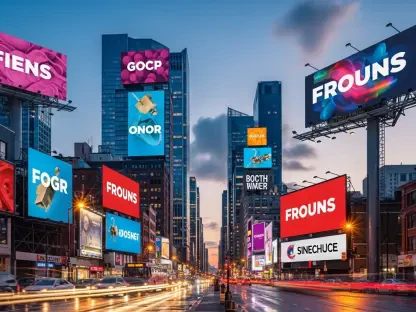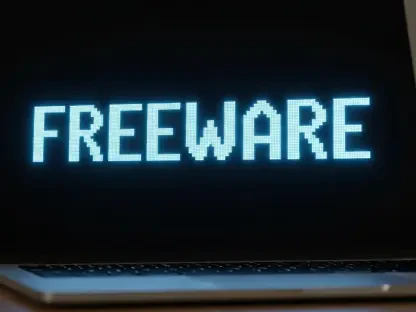Overview of the UAE’s Social Media Influencer Industry
Imagine a digital landscape where a single post from a social media influencer can sway the purchasing decisions of thousands in mere hours, shaping trends across the United Arab Emirates with remarkable speed and impact. This is the reality of the UAE’s booming influencer industry, a powerhouse in digital marketing that has seen explosive growth over recent years. With a tech-savvy population and high social media penetration, influencers have become pivotal in connecting brands with consumers, driving engagement through visually rich and culturally resonant content.
The scope of influencer activities in the UAE spans a wide array of platforms, including Instagram, TikTok, and YouTube, where major players—ranging from lifestyle bloggers to fitness gurus—command massive followings. Technology plays a central role, enabling creators to leverage advanced analytics, high-quality production tools, and algorithm-driven strategies to captivate audiences. Brands increasingly rely on these digital personalities for authentic storytelling, making influencers indispensable to modern marketing campaigns.
However, with this rapid rise comes the challenge of oversight, as paid promotions often blur the lines between genuine recommendations and sponsored content. The growing influence of such advertisements has raised concerns about consumer trust and the potential for misleading information. This evolving dynamic has prompted regulatory bodies to step in, seeking to balance innovation with accountability in the digital space.
Detailed Analysis of the New Regulation
Core Components and Obligations
The UAE Media Council has introduced a groundbreaking mandate, effective from this year, requiring social media influencers to obtain an Advertiser Permit, also referred to as the Mu’lin permit, before posting paid content. Announced on August 5, this regulation targets transparency by ensuring that all promotional material is clearly identified and adheres to strict media standards. Influencers must apply for this permit through the official UAE Media Council website, a process designed to formalize their role as advertisers.
Under the new rules, permit holders are tasked with several key responsibilities to maintain compliance. These include verifying the legitimacy of advertisers they collaborate with, displaying their permit number visibly on social media profiles, and submitting annual reports detailing their advertising activities. Additionally, influencers are prohibited from allowing others to use their accounts for promotional purposes and must align with UAE tax regulations, ensuring a structured and accountable approach to digital endorsements.
This comprehensive framework extends to securing necessary approvals from relevant authorities for specific content types, particularly in regulated sectors like health or finance. The regulation applies uniformly to UAE citizens, residents, and even visitors, reflecting a commitment to consumer protection across all demographics. Such measures aim to curb deceptive practices and foster a trustworthy online environment for audiences navigating a sea of sponsored posts.
Eligibility Criteria and Permit Duration
To qualify for the Advertiser Permit, applicants must meet specific criteria set by the UAE Media Council, starting with a minimum age requirement of 18 years, though exceptions may be granted under certain conditions. Another prerequisite includes a clean record with no prior violations of media content rules, ensuring that only credible individuals engage in paid promotions. For UAE citizens and residents, holding a valid electronic media trade license is also mandatory, aligning the permit with formal business standards.
The validity of the permit varies depending on the applicant’s status within the country. For citizens and residents, the permit lasts for one year and can be renewed annually, providing a stable framework for long-term creators. Visitors, on the other hand, receive a three-month permit, also renewable, catering to short-term influencers while maintaining regulatory control. As a supportive gesture, the permit is offered free of charge to UAE citizens and residents for a period of three years, easing the financial burden on local talent.
These eligibility and validity structures underscore a nuanced approach to regulation, accommodating the diverse nature of the influencer community. By differentiating between permanent and temporary participants, the UAE Media Council ensures fairness while upholding rigorous standards. This balance is critical in nurturing a professional ecosystem without stifling the creative freedom that defines social media content.
Challenges in Enforcement and Compliance
Implementing the Advertiser Permit mandate presents notable challenges for influencers navigating the complexities of compliance. Many creators, especially smaller or independent ones, may struggle with understanding and adhering to the detailed guidelines, such as obtaining approvals for specific content or meeting annual reporting deadlines. The administrative burden of these requirements could deter some from formalizing their activities, potentially pushing them toward unregulated spaces.
For the UAE Media Council, enforcing these regulations across a varied group of influencers—ranging from full-time professionals to part-time hobbyists and transient visitors—poses its own set of difficulties. Monitoring compliance on multiple platforms, detecting violations, and addressing non-registered advertising are resource-intensive tasks. The scale and global nature of social media further complicate enforcement, as content often transcends national boundaries.
Potential solutions to these hurdles include launching educational campaigns to inform influencers about the permit process and compliance expectations. Streamlining digital application systems and offering dedicated support for small-scale creators could also ease the transition. Collaboration between regulators and platform providers may enhance monitoring capabilities, ensuring that the regulatory framework adapts to the fast-paced digital environment without overwhelming stakeholders.
Broader Regulatory Context and Industry Impact
The Advertiser Permit is part of a larger regulatory landscape in the UAE aimed at standardizing digital advertising and protecting consumers from misleading content. The UAE Media Council plays a pivotal role in this effort, establishing guidelines that promote ethical practices in online promotions. This regulation aligns with national objectives to enhance transparency, ensuring that audiences can distinguish between organic opinions and paid endorsements in an increasingly commercialized digital space.
The impact of these rules extends beyond compliance, influencing how influencers approach brand collaborations and content creation. Businesses partnering with creators must now prioritize working with permit holders, potentially reshaping marketing strategies to focus on authenticity and legal adherence. This shift could elevate the professional status of influencers, positioning them as legitimate advertisers within a regulated framework, while also rebuilding audience trust in sponsored content.
Moreover, the regulation’s emphasis on accountability is likely to alter public perceptions of influencer marketing. As permit numbers become visible on profiles, consumers gain a tool to verify the credibility of promotional posts, fostering confidence in digital interactions. Over time, this transparency could set a benchmark for other markets, positioning the UAE as a leader in responsible digital advertising practices.
Future Trends in UAE Influencer Marketing
Looking ahead, the Advertiser Permit mandate is poised to drive significant formalization and professionalization within the UAE’s influencer marketing sector. From this year to 2027, the industry is expected to see a surge in structured partnerships as brands seek out compliant creators, potentially sidelining those who fail to adapt. This trend toward regulation may also encourage the development of specialized roles, such as compliance consultants for influencers.
Innovation is likely to play a key role in shaping the future, with platforms possibly integrating features for permit verification or automated reporting to simplify adherence. Technology-driven solutions could emerge to assist creators in managing approvals and tax obligations, reducing friction in the compliance process. Such advancements would align with global trends toward digital efficiency, ensuring the UAE remains competitive in the influencer marketing arena.
Economic factors and evolving consumer expectations will further influence the trajectory of this sector. As audiences demand greater authenticity, influencers may pivot toward niche, value-driven content to maintain engagement under stricter scrutiny. The interplay of these dynamics suggests a maturing industry, one where regulation and creativity coexist to meet the needs of a discerning digital populace.
Final Reflections and Next Steps
Looking back, the introduction of the Advertiser Permit by the UAE Media Council marked a transformative moment for social media advertising, balancing support for creators with stringent measures to protect consumers. The initiative tackled critical issues of trust and accountability, setting a precedent for how digital spaces could be governed effectively. Its comprehensive approach addressed the needs of a diverse influencer community while prioritizing audience welfare.
Moving forward, actionable steps emerged as essential to sustain this momentum. Stakeholders were encouraged to invest in continuous education programs, ensuring influencers understood and embraced compliance requirements. Collaboration between regulators and businesses became crucial to refine policies and address enforcement gaps, fostering a cohesive ecosystem.
Additionally, adapting regulations to keep pace with technological advancements and industry growth stood out as a priority. By anticipating shifts in consumer behavior and platform dynamics, the UAE positioned itself to maintain leadership in digital advertising governance. These considerations paved the way for a future where transparency and innovation thrived hand in hand, benefiting all participants in the digital marketplace.









